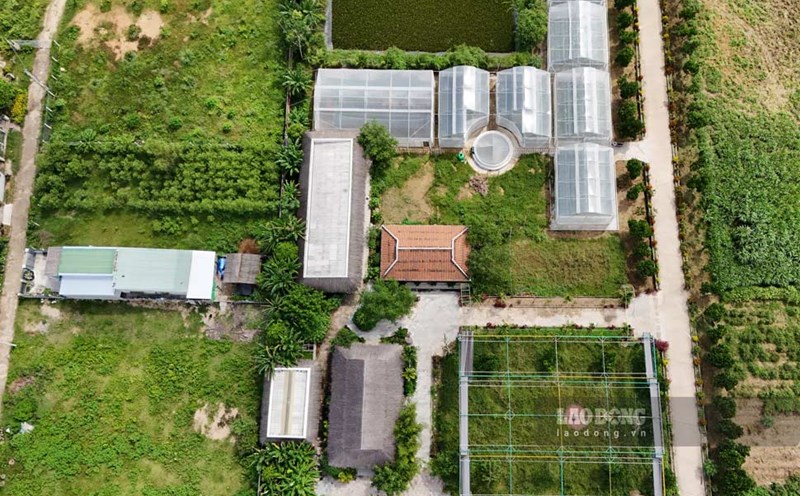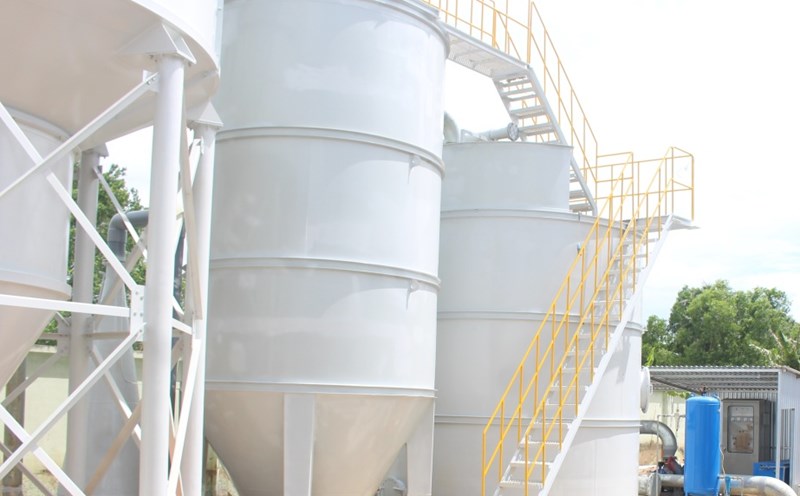Accelerating growth and monetary easing
In the first 9 months of the year, the Vietnamese economy has shown impressive resilience, overcoming initial concerns about the impact of tariffs and global trade.
The macro report for the fourth quarter of 2025 of Dragon Capital Securities Company (VDSC) clearly stated: "Economic growth in the third quarter remains close to the growth target despite the new tariffs taking effect from August 1, 2025".
GDP growth in the third quarter of 2025 reached 8.23% over the same period, the highest growth rate since 2007 (excluding the recovery period after COVID-19). In the first 9 months of the year, GDP reached 7.9%. This growth is driven by the resilience of the manufacturing and export sector of foreign-invested enterprises (FDI), along with stable contributions from public investment and private consumption.
Notably, VDSC also commented that there is a phase difference in export growth between the two groups. While the export growth of the FDI sector continued to expand ( accumulated for 9 months increased by 21.6%), the domestic business sector slowed down ( accumulated for 9 months increased by only 3.7%). This shows that the shift in trade to avoid high Chinese tariffs is benefiting exports of the FDI sector in Vietnam.
The most important foundation for consolidating economic growth momentum is the strong easing of monetary and credit policies.
VDSC pointed out: "Credit has expanded strongly in the first quarter of 2025, up 19.6% over the same period". This is a record credit growth rate in many recent years. Meanwhile, KB Vietnam Securities Company (KBSV) expects the credit growth rate of the whole system to reach 20% in 2025. Maintaining interest rates at a low level (or only increasing slightly) until the end of the year creates favorable conditions for cash flow to continue to circulate, supporting businesses to expand production and business, thereby promoting economic growth.
Unblocking internal resources
In addition to abundant cash flow, efforts to unlock internal resources from the Government are creating clear economic driving forces in the fourth quarter. KBSV emphasized two key macro topics: Public investment and Legal clearance.
Accordingly, public investment is identified as one of the three pillars to promote economic development. Accumulated in the first 9 months of 2025, public investment disbursement reached VND481.6 trillion, up about 48.1% over the same period in 2024. However, VDSC also warned that the disbursement rate in the third quarter slowed down significantly compared to the second quarter. To achieve the disbursement target of 100% of the plan assigned by the Prime Minister, the disbursement scale in the fourth quarter must be accelerated dramatically, equivalent to 134 trillion VND/month. This creates optimistic prospects for the Construction Materials (steel, cement, stone) and Infrastructure Construction industries, helping to stimulate the total demand.
In addition, many policy bottlenecks, especially in the real estate sector, are being actively resolved by the Government. Draft Laws amending and supplementing the Land Law and specific Resolutions have been issued to free up resources and promote healthy growth for this important market.
KBSV assessed that these changes will speed up the implementation of new projects, helping experienced enterprises and large clean land funds to benefit, thereby creating a recovery for the entire value chain of the construction industry, materials and banking.
The story of the stock market upgrade that FTSE Russell has decided to include in the monitoring list is also an important macro factor, which KBSV estimates can attract billions of USD of foreign capital into Vietnam, strengthening the position of the economy on the global financial map.
With the above efforts and advantages, VDSC believes that the growth target of 8.0% in 2025 is feasible.
"However, the economy needs to have fundamental restructuring to aim for a 10% growth target next year," the analysis team said.
Be cautious about exchange rates and trade risks
VDSC points out that the biggest short-term risk for our country is exchange rate pressure. The Vietnamese Dong (VND) is one of the few currencies that will depreciate against the USD in 2025 (about 3%), while the DXY index (a measure of the strength of the USD) will decrease.
To reduce pressure, the State Bank of Vietnam (SBV) has had to take technical measures by selling foreign currency with a term to commercial banks with a total scale of about 2.9 billion USD. Although these securities companies believe that the most stressful period of exchange rates has passed, investors still need to closely monitor the operational movements of the SBV to ensure macroeconomic stability.
In the long term, the risk of US transit tax is an uncertain factor for the foreign-invested manufacturing and export (FDI) sector. Although KBSV has pushed this risk back to 2026, the specific conditions for applying a 40% tax rate to goods that do not achieve a high localization rate are unclear and need to be closely monitored by exporting enterprises.












